CUSTOM SUMPS, REFUGIUMS,
RESERVOIRS, CHEMICAL TANKS, BERLIN SYSTEMS, FRAG TANKS, LIGHTING SUPPORTS, YOUR
IDEAS/DESIGNS, MOST ANYTHING IS POSSIBLE!
YOUR DREAM SYSTEM OR PROJECT CAN BE A REALITY SETTING UNDER YOUR
AQUARIUM OR PROUDLY ON DISPLAY IN YOUR AQUARIUM EQUIPMENT
ROOM!
Below are just a
sampling of the hundreds of custom sumps, filters, and projects that have been
designed and fabricated by Jeff at Lifereef. Perhaps one of these designs will
work for your application but if not let Jeff's 34 years of creative design,
drafting, machine tool, and fabrocation and assembly expertise help you with
your project. When your filter system components are low maintenance and have a
fantastic overall look then your enjoyment in this hobby is even greater! It's
not so fun having to manage a messy looking system with cords and hoses going
every which way.
Sumps or Systems designed
to FIT! Jeff will converse via phone with you to design a system to fully
utilize the space, or the space you wish to use for your Lifereef project. Jeff
will then use his years of experience to design a sump to offer as much
versatility as possible, for example: Connection ports for R/O top-off line and
a Calcium Reactor, drop-in Filter Cylinders or drop-in media reactors, probe
holders, LifeReefugium, whatever you need or specify, and many features are
already inclusive in all sump designs, no need to pay extra!
Need additional features
like waste collectors or ATO containers to match and fit your space, certainly!
Your entire Lifereef system from sump, refugium, protien skimmer, calcium
reactor, ATO, and waste collectors can all be matched to your color scheme!
Trying to do this with "off the shelf" products can be frustrating, have it all
designed to fit your space!
Seeing your dream system or project jump from 2-dimensional sketches and
discussion into a real 3D project is something to behold!
Some of the "SIGNATURE SERIES" builds....
Now your filter system can look as nice as your corals! Why does a filter
system have to look mundane and with no character? Why not show off your filter
system just like you show off your aquarium? Many hobbyists are more curious as
to what you have "behind the curtain" than what is in your aquarium! Show off
your Lifereef System in colors of your liking! The florescent colors have the
most "bang" when lit with a UV light and these can be purchased in many sizes
and are low cost, no need for an expensive aquarium light. Of course there are
many other colors available and can be discussed when you place your order.
Enjoy the show!

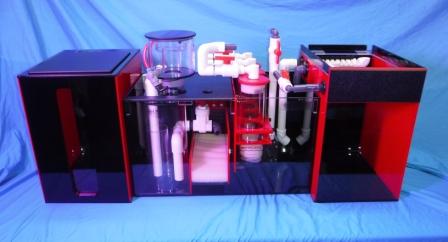
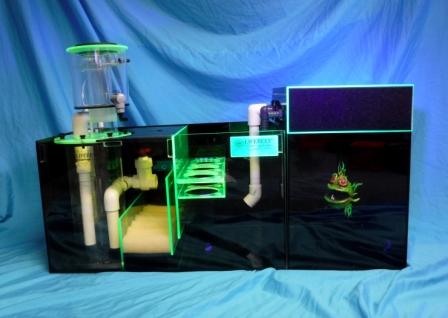
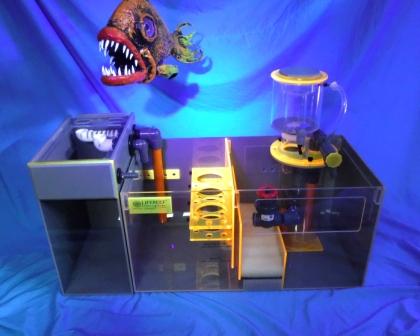
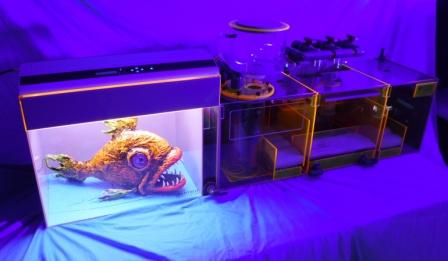
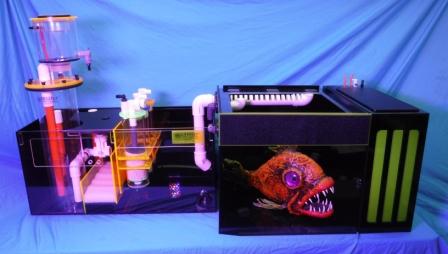

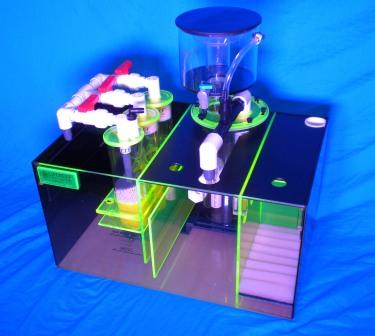
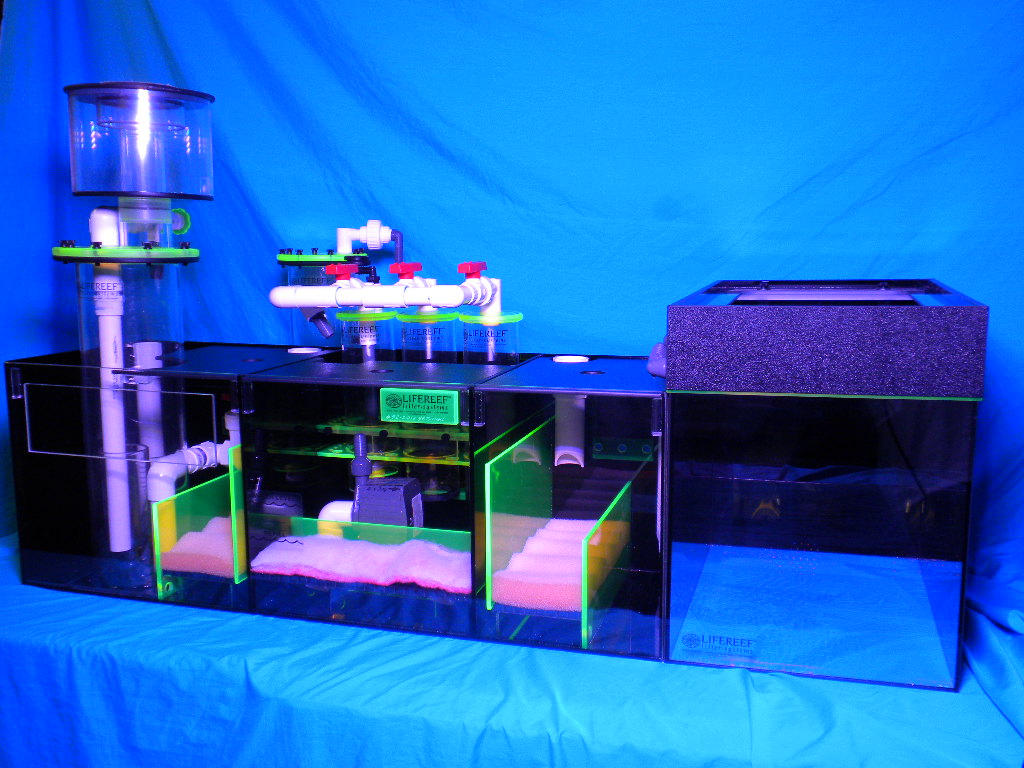

Custom Reef Aquarium with filtration and protein
skimmer integrated into the rear of the aquarium.
Customer request for an
integrated Lifereef Protein Skimmer to be used within an aquarium/sump system.
24 x 24 x 20 footprint which included a custom made mount for the Radion RX30w
Pro. Go here masinireef.blogspot.com to
read and see more of this fantastic nano tank.....
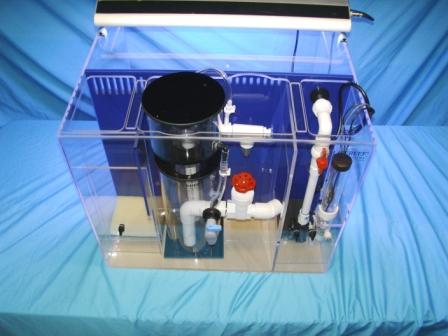
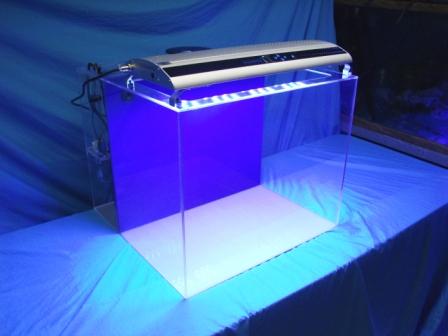

Hobbyists desire to get a large sump into his
stand required a four-piece sump array "bolted" together with the
interconnecting bulkheads. This design was the customers, with a review of the
design to look for any potential problem areas. Overall size is 44 x 21 x 22
high. Water enters into the right sump (a Lifereef VS3-36 skimmer is connected
externally to this chamber) then flows into rear center sump to the left, then
reverses flow to the right where it enters the front center sump and flows to
the left and enters the left sump where a submersbile pump returns the water to
the aquarium.
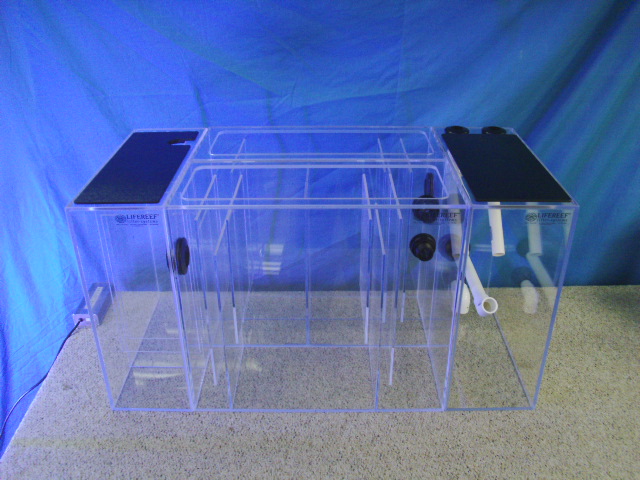
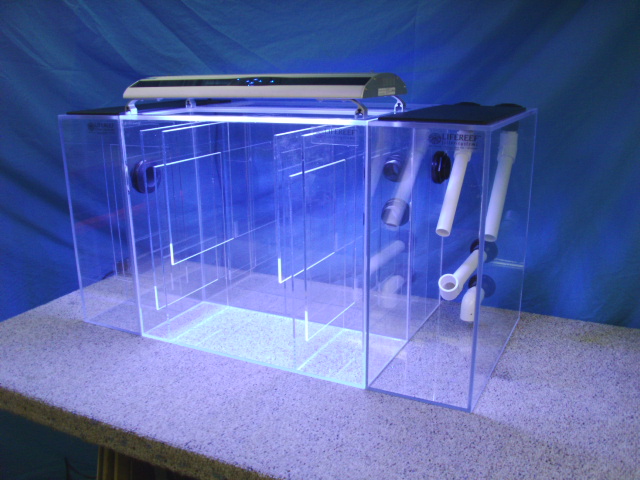
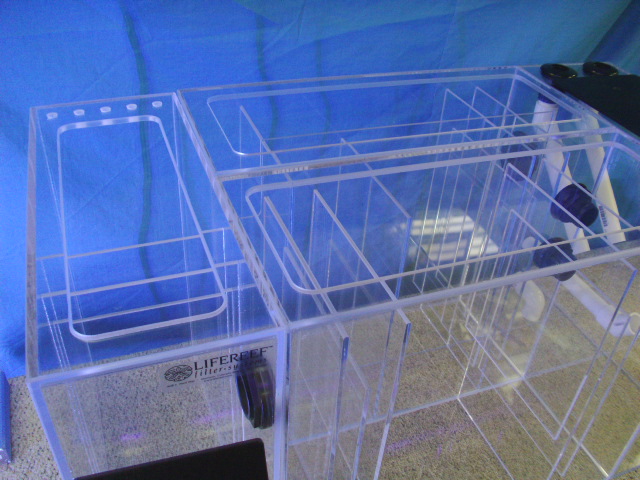

Hobbyists cabinet has center storage area so sump
had to be split into two sumps connected via two 1" lines run behind the center
area. Left sump has input chamber, mechanical/chemical chamber, and skimmer
chamber. Right sump contains the return system pump and the Lifereef Accessory
Rack to hold media reactors and a bio-reactor, and probes. As soon as the user
gets this installed and provides a photo I'll be posting it
here.
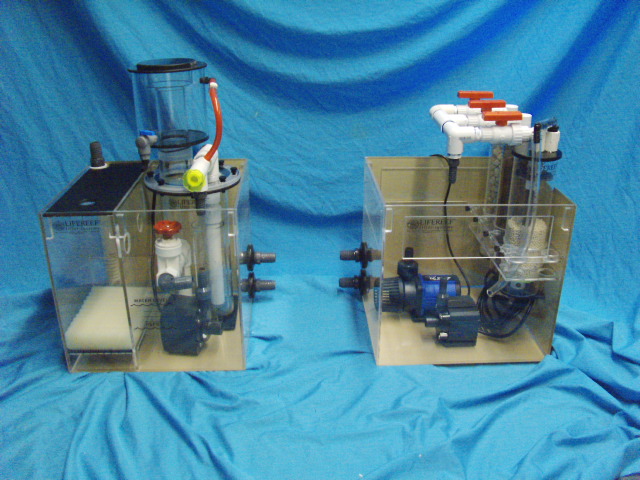
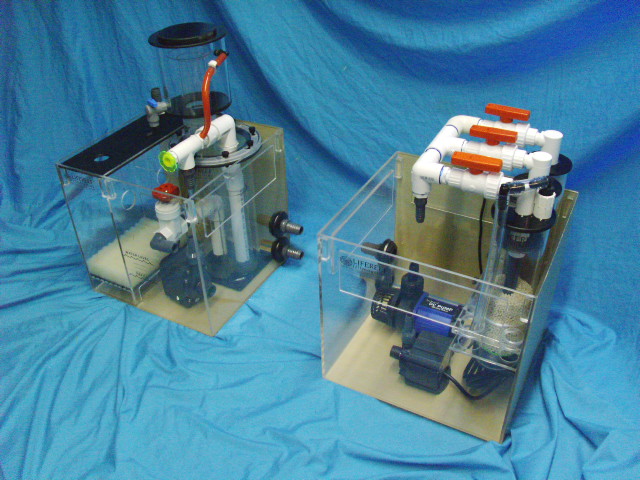

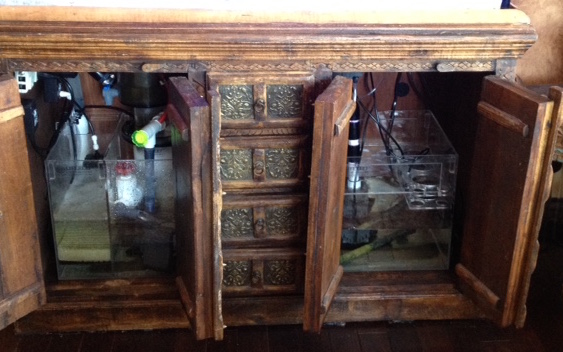
And many many more
customs!
A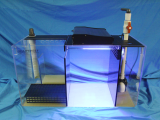 |
B |
C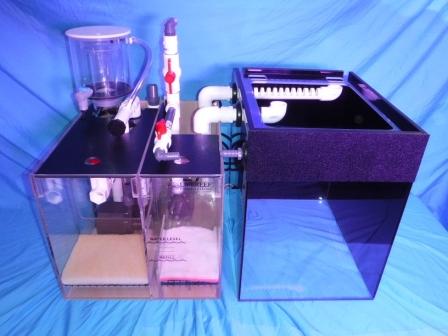 |
D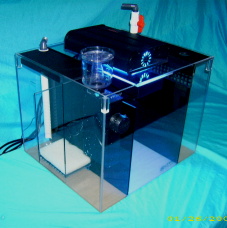
|
E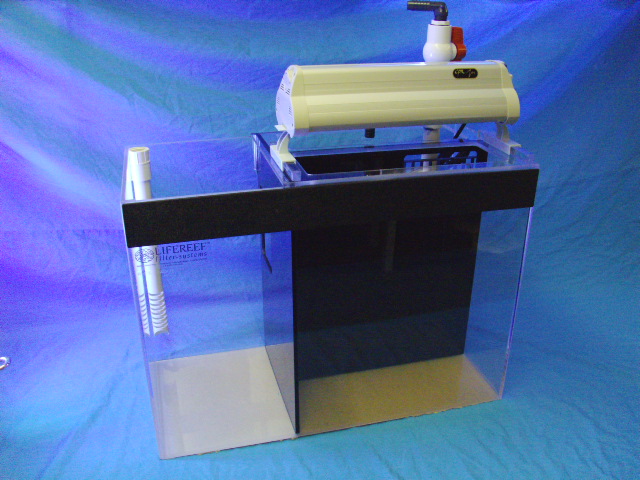
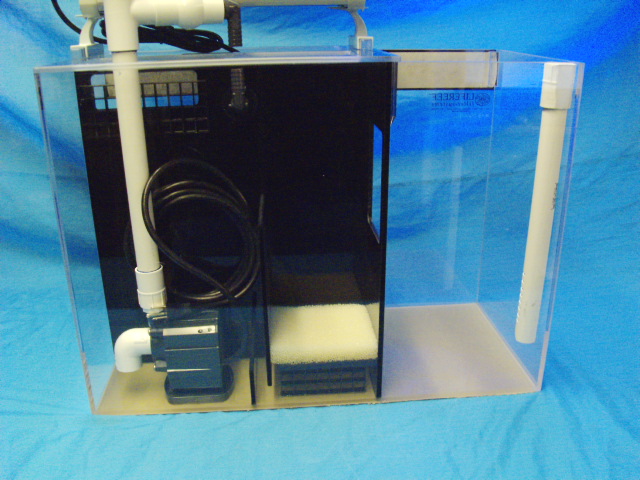 |
F 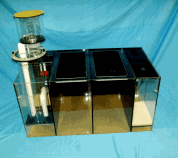
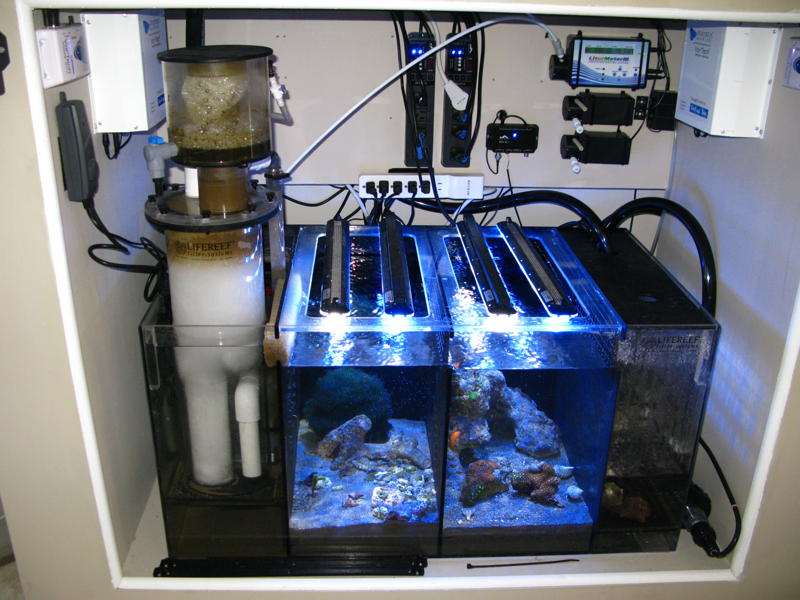 |
G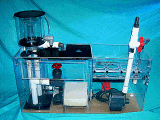 |
H
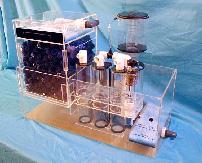 |
I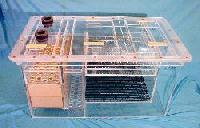 |
J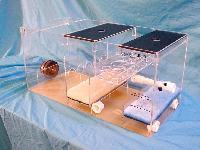 |
K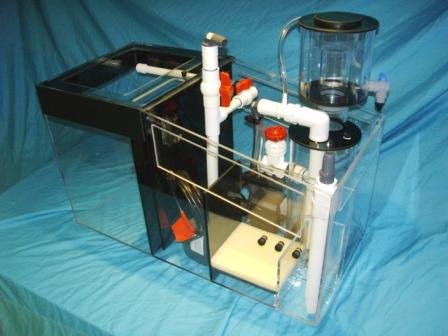
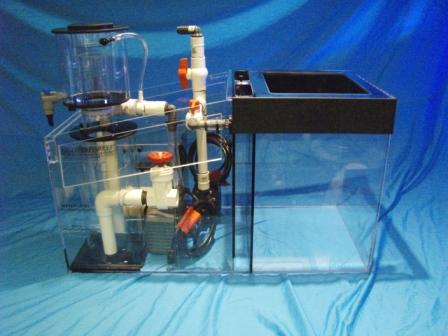 |
L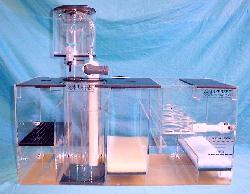 |
M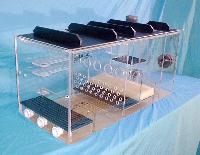 |
N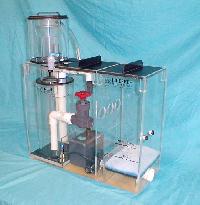 |
O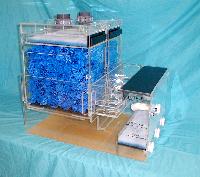 |
P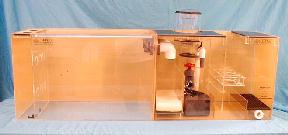 |
Q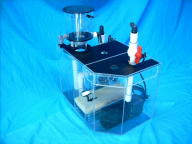 |
R
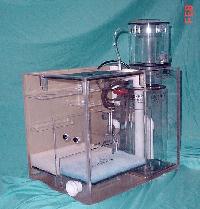 |
S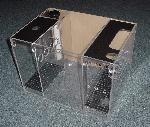 |
T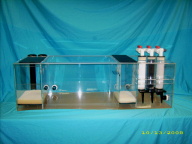 |
U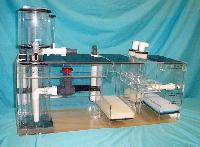 |
V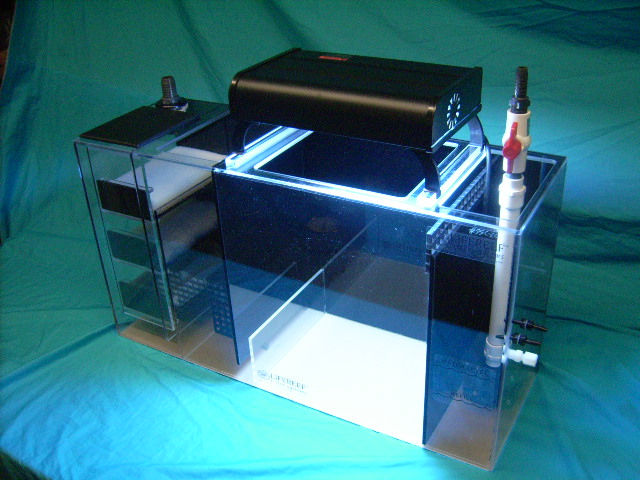 |
W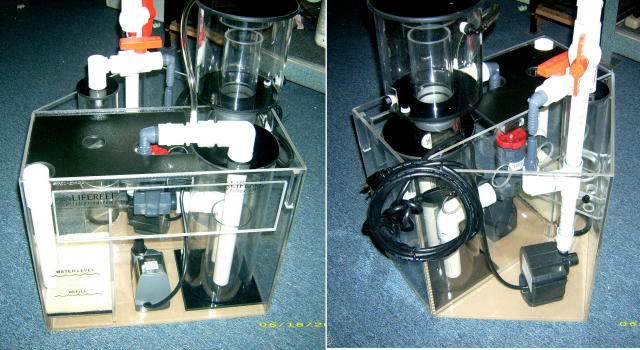 |
XFRAG TANK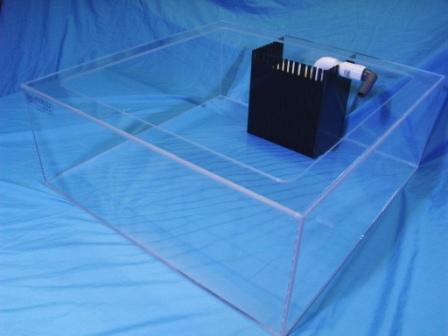 |
YLarge Double Tower Wet/Dry
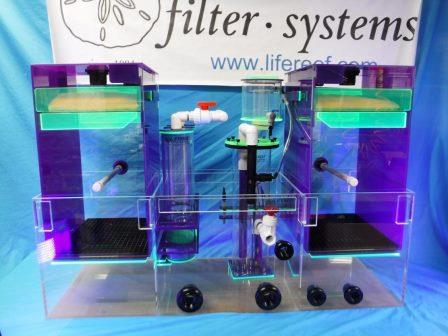 |
Z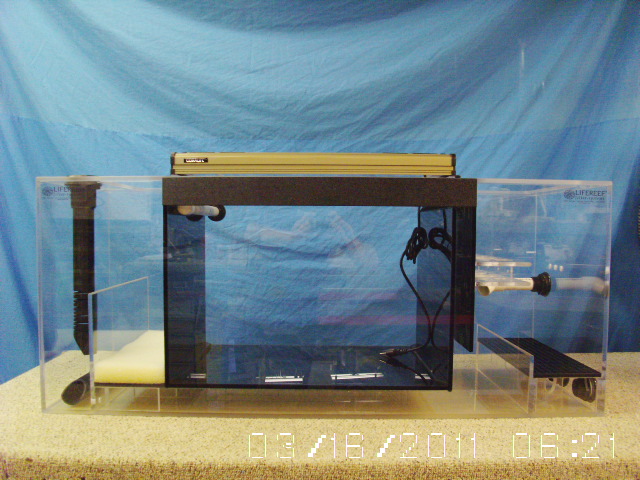
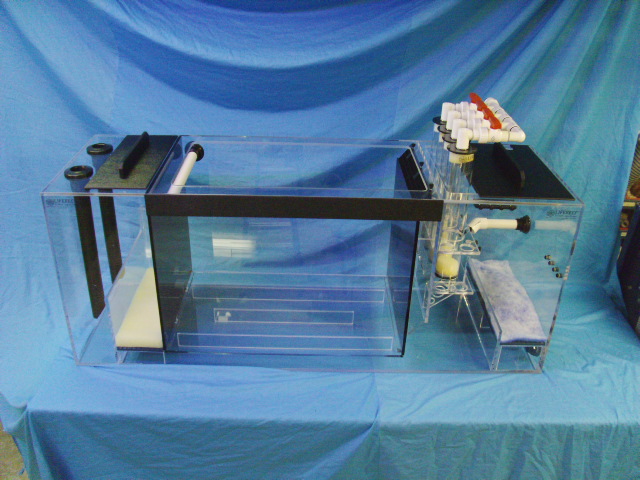 |
ONE
LARGE WET/DRY!
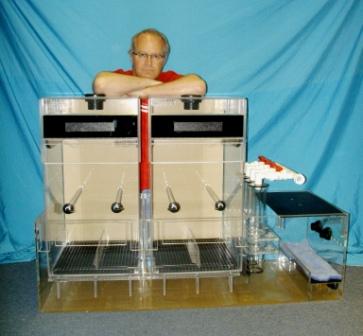
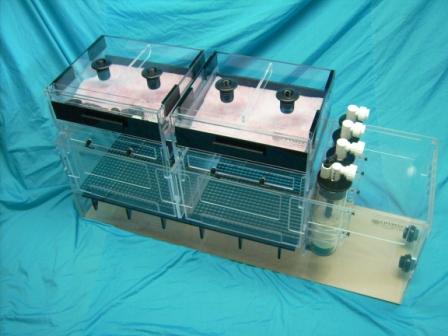 |
Custom Light Mount

|
|
You
won't find this valve at any hardware store!
It is a Custom Short 3-way
valve made using two
right-angle valves and cutting in half,
bonding
halves together and adding reinforcing rings.
Valve is not shown
in "installed location" just
shown here for detail.
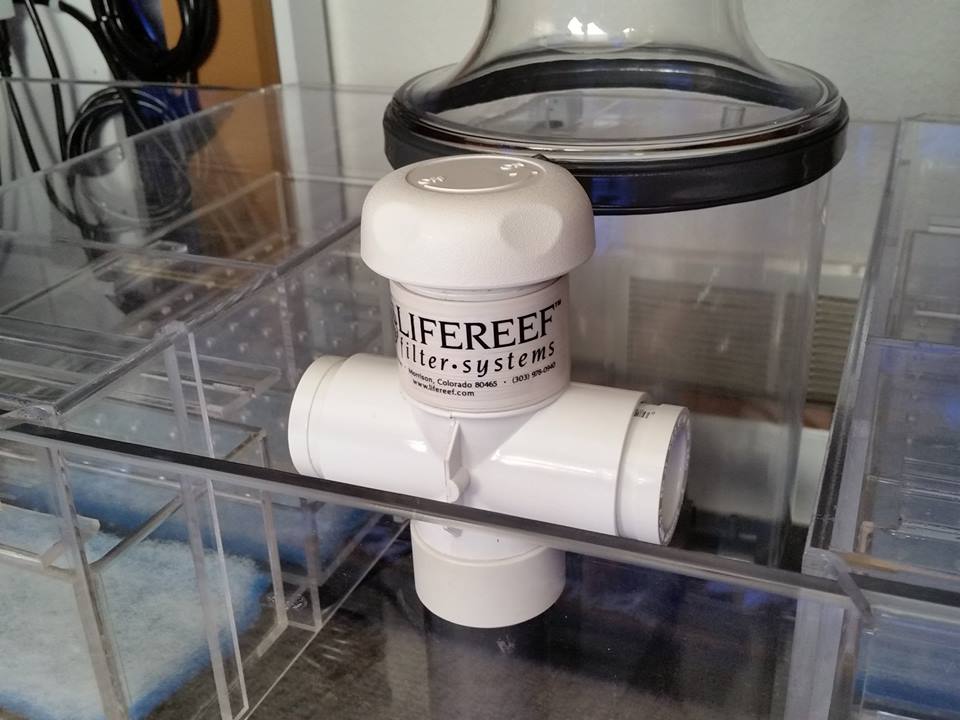 |
|
|
Past Lifereef Products or, a history and evolution of
the Lifereef products.
These may
be discontinued but parts/service will be provided where possible.
|
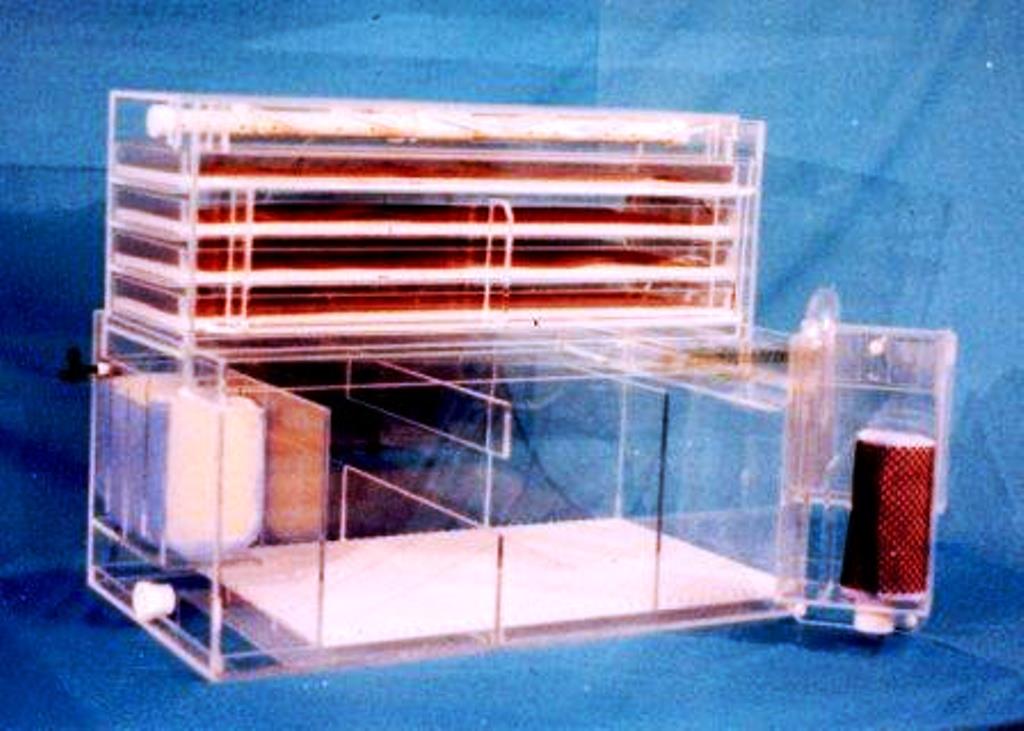
Circa 1984 "THE ORIGINAL" first generation Lifereef wet/dry
trickle filter that used four slide-out trays filled with coral gravel. The
sump chambers were also filled with coral gravel and/or carbon, nitrate remover
products, etc This was before the advent of numerous plastib bio-ball products.
There was also a built-in denitrifier on the far left, this was before the
"invention" of more efficient venturi protein skimmers, airstone skimmers were
in use at this time and I did make one.
Actually "the original" wet/dry filter was introduced to the
U.S. hobbyist by Georg Smit in 1983 and was made from glass. I took the glass
design and made it acrylic but also eliminated many of the salt creep issues
the original had as well as some other fine features that the original did not
have.
Below is a circa 1990 Wet/Dry Trickle Filter found
and purchased by a lucky hobbyist in December of 2017! Very few changes from
this to the current version and same for the protein skimmer!
 |

Circa 1991 Lifereef Wet/Dry Trickle Filter. This filter does
not yet have the Accessory Rack for the filter cylinders as shown in the photo
at right. Lifereef wet/drys never used the rotating pain-in-the-$## spraybars
as others were. Lifereef wet/dry filters utilized (and still do today) a
slide-out drip-tray drawer to evenly distribute the water over the
bio-balls.
A big plus with the Lifereef
wet/dry filters was the "contact time" with the water falling through the
bio-media in contact with the bacteria. This was paramount in how efficient any
wet/dry is. Many other wet/dry filters were only 14" to 18" tall, the Lifereef
is 22" tall.
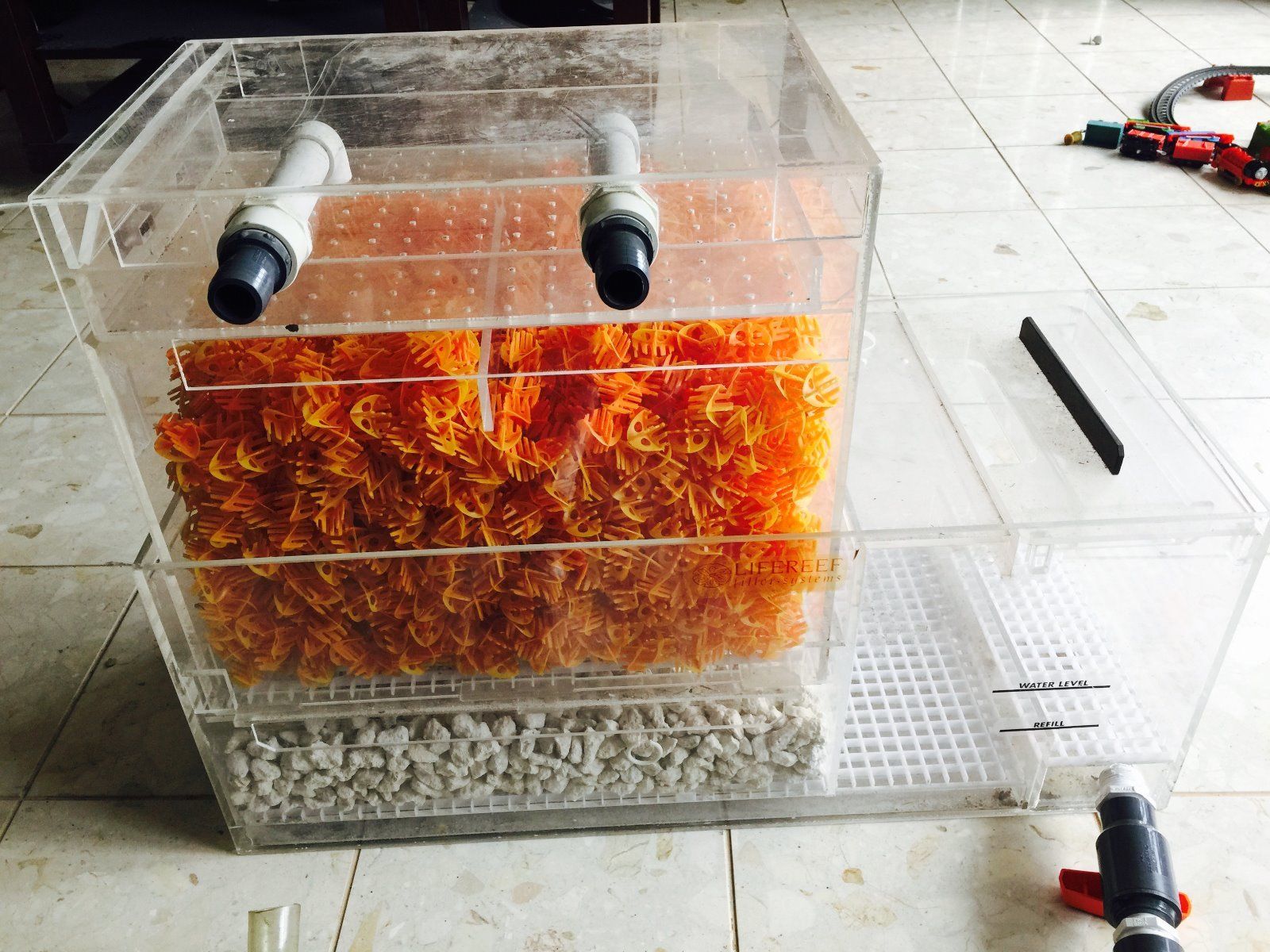 |

Circa 1993 Lifereef Wet/Dry filter (less bio-balls) but now
having the Accessory Rack for the Lifereef Filter Cylinders. The tower in this
photo has been turned 90 degrees clockwise putting the drawer in front. Default
position is for the drawer to slide out over the sump so when the drawer is
opened to change the pad water does not drip on the floor.
This was
the last year of the trickle filter being used for reef aquariums. Lifereef
then offered the first BERLIN SYSTEMS to the hobbyist when that bedan in
1994!
This is the current Lifereef Wet/Dry,
not much has changed showing how well this filter has stood the test of time.
The changes? ABS sump cover instead of acrylic, extra bulkhead for a
LifeReefugium and connection fittings for a calcium reactor, auto-top-off line
or other accessory, that's it!
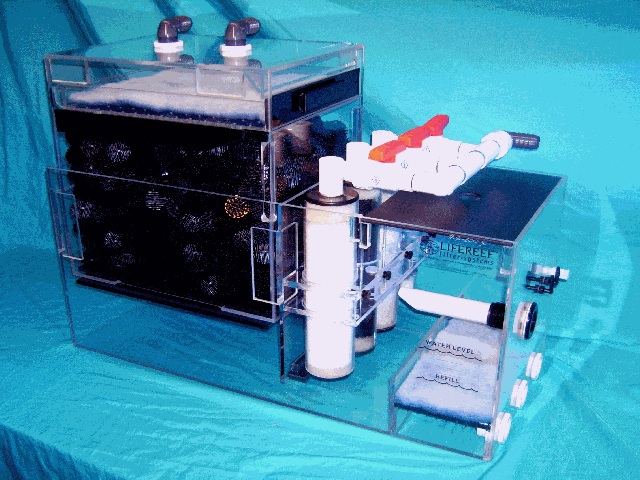 |

Lifereef
Automated Denitrifier
This was popular when
wet/dry filters were the norm (1984 thru 1994), though many Lifereef wet/dry
users did not require this many were sold to hobbyists using inferior wet/dry
filters and inefficient protein skimmers.
This denitrifier was called a "batch denitrifier" as it took a
batch of water, dosed a teaspoonfull of methanol, and several hours later when
the nitrates were reduced to zero, the water was flushed back into the system
and the process repeated itself up to six times per day. These fell out of
popularity when the Berlin Method of filtration came about in
1994. |
|
|
|
|



![]() All Products
All Products![]() Price List
Price List![]() Ordering
Ordering![]() Contact
Contact![]() Catalog Request
Catalog Request![]() Sump/System
SCHEDULE
Sump/System
SCHEDULE ![]() READY TO
SHIP STUFF!
READY TO
SHIP STUFF!
![]() NEW!!Jellyfish
Tanks!
NEW!!Jellyfish
Tanks!![]() Calcium
Reactors
Calcium
Reactors![]() Media Reactors
Media Reactors![]() Custom Showcase
Custom Showcase![]() Testimonials
Testimonials![]() Garage Sale
Garage Sale![]() Warranty
Warranty ![]() Nano System/Sumps
Nano System/Sumps![]() Prefilter/Overflows
Prefilter/Overflows![]() Protein
Skimmers
Protein
Skimmers![]() Refugium/LifeReefugiums
Refugium/LifeReefugiums![]() Wet/Dry Trickle Filters
Wet/Dry Trickle Filters















































